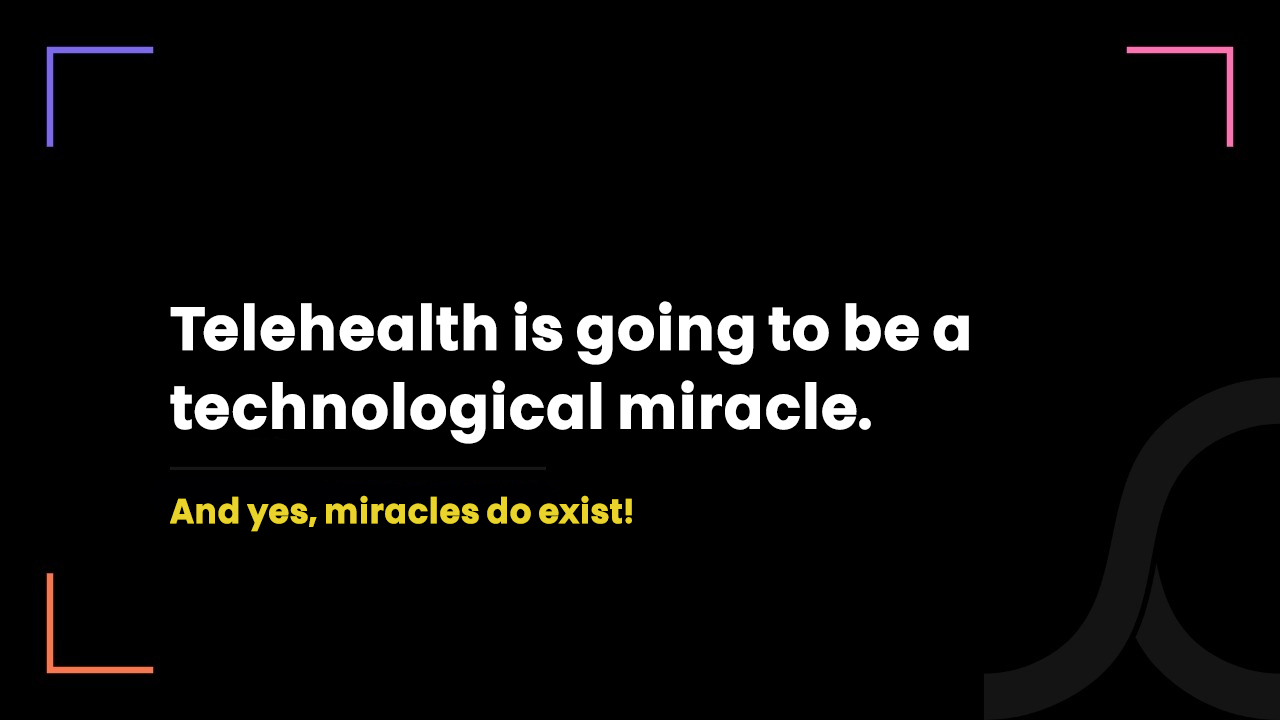What Are the Technology Trends in the Telehealth Industry?

4 years ago
We were having an Easter party at our workplace.
I was accompanied by 2 of our senior telehealth app developers while having delicious food.
We started the random discussion around the latest trends in the telehealth industry.
Though discussion on telehealth is our everyday business, the discussion with experts who technically achieve it is something interesting.
4 Game-Changing Telehealth Technology Trends
Senior Developer 1:
Many of our new clients want us to add a symptom checker in the telehealth app. Is it going to be dominant telehealth technology?
Me: (by the way, you can follow me on LinkedIn)
Well, a symptom checker is very important when it comes to user experience on the telemedicine app.
With a symptom checker, patients can know what type of illness they are having in a matter of seconds.
Most importantly, if a telehealth solution has a symptom checker, patients can get to know their illness without talking to physicians.
And if they schedule a televisit with physicians after checking their symptoms, the physicians will have very useful data of patients’ symptoms, medical history etc.
However, the major challenge we - as technical experts - should overcome is accuracy as there are the same symptoms for different illnesses such as flu and COVID-19!
Thus, we have to make sure the symptom checker does not reach the wrong conclusion.
With sophisticated AI and machine learning-based algorithms, we can easily achieve accuracy in symptom checkers.
So yes, it will be the dominant technology of telehealth.
Babylon by TELUS Health has already been providing a symptom checker in its app.
Senior Developer 2:
Remote patient monitoring (RPM) integrated with telemedicine has a better use case. It actualizes contactless care delivery in a true sense.
Me:
Yes, you are right. The major limitation of telemedicine is that physicians cannot know the biometric data of patients such as heart rate, blood sugar level etc.
For that, the patients should either measure it by themselves or the care providers should measure it.
But this requires direct contact and it increases the risk - especially when the telehealth program is there in hospitals and long-term care homes.
So this way, there is no good use of telehealth.
But if we integrate RPM with the telemedicine app, the physicians can know the real-time biometric data of patients on their app itself.
Not only this, but they can know the historic biometric data of patients which enhances the patient outcome.
But here also, there is a technical challenge - device compatibility.
If the IoT devices which measure the biometric data of patients aren’t technically compatible with the telemedicine app, the app either receives wrong data or does not receive any data.
Senior Developer 1:
The most memorable project I have worked on is integrating behaviour analysis in a telemedicine app. This idea is epic for virtual mental therapy.
Me:
When we delivered our first telemedicine app in 2017, none of us had imagined that telemedicine would one day reach here.
Behaviour analysis is the best technology for psychiatrists who wish to provide mental health therapy online.
Because in virtual meetings, it becomes difficult for psychiatrists to identify the psychological disorders patients are having.
Algorithms that analyze the behaviour of the patients on the video consultation provide observable behavioural cues and symptoms of patients to psychiatrists.
And with this data, psychiatrists can prepare a personalized mental care plan for the patients.
Senior Developer 2:
Behaviour analysis reminds me of emotional technology. Can you guys imagine a telemedicine app working on emotional technology?
Me:
Yes, I can.
- The app tracks the worsening health of users and suggests having a physician appointment.
- By analyzing voice during the televisits, the app helps physicians identify the mental health of patients.
- Therapists can know the real-time stress, anxiety and frustration level of patients after every question or after certain minutes.
- By tracking and monitoring body movement during the televisit, the app identifies whether the user is happy with care delivery.
- With physical and voice analysis during the televisit, the app lets physicians know the real pain the patient is going through.
Our telemedicine solution is trending among Canadian healthcare providers. Get the live demo now
We are Ontario-based telemedicine tech and compliance experts.
We develop custom, clone and white-label telemedicine solutions with EMR/EHR integration of your choice.
With our in-house compliance experts, we always make sure to deliver a compliant telemedicine solution only.
You can read our case study on telemedicine app development to explore our skillset.
We are also excited to share the screenshots of our most recent telehealth project.
